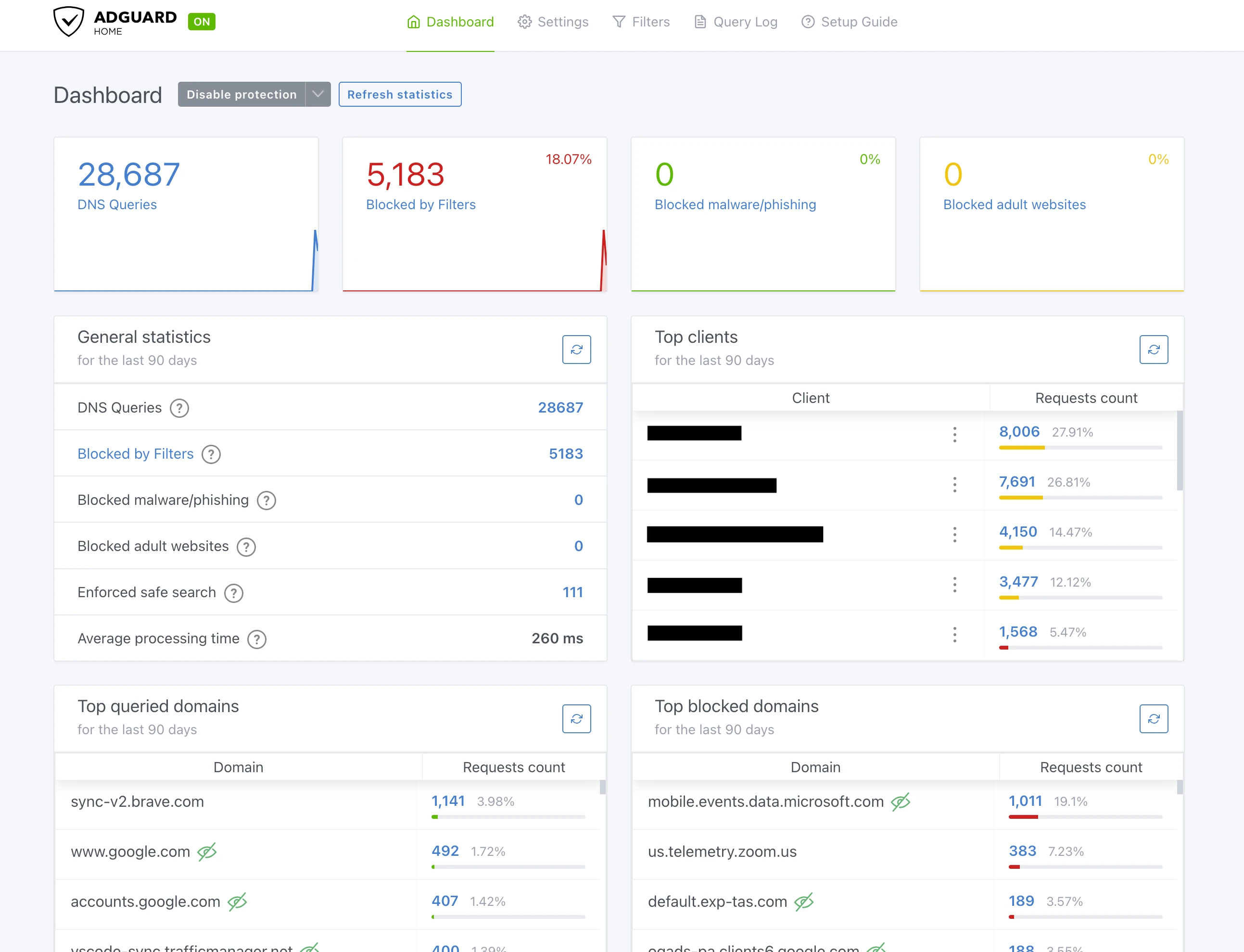I recently bought a new phone because after serving me faithfully for six years, my Poco F1's was left nearly unusable because of my carelessness. I dropped the phone while riding a bike and the screen cracked due to the impact. I had got the screen and battery replaced quite a few times, so I decided to finally say goodbye to this iconic phone.
For the last two months, the phone was lying unused in my closet. Recently somebody posted their homelab setup using their old phone. This post gave me the idea to bring back my Poco to life. So I started exploring the options available to me. I was planning to buy a Raspberry Pi 5, but the unit economics doesn't really work in the favour of RPi because of its rising cost. I think this phone can serve as a good alternative of RPi given that the inbuilt battery can also work as a UPS.
Loading image...

The Poco F1 was a beast of its time. It was launched in 2018 and came with flagship class specs.
- Chipset - Qualcomm SDM845 Snapdragon 845 (10 nm)
- CPU - Octa-core (4x2.8 GHz Kryo 385 Gold & 4x1.8 GHz Kryo 385 Silver)
- GPU - Adreno 630
- Memory - 64GB 6GB RAM
I had unlocked it in the first month of purchase and installed and used quite a few custom ROMs on it. It is still a community favorite. Alas, companies don't manufacture phones like this anymore 😔
So, given the beefy specs, I was very tempted to set something on it. There were two options available to me -
- Installed something like PostMarketOS or mobile-nixos
- Root the phone, install Termux and install all services with it
There is support for Linux installation on Poco, but I have some essential Google services running on this phone which can't be substituted. So I abandoned this idea.
I have previously rooted a number of phones, so rooting this phone was a trivial task. There are a number of tutorials available on the Internet if you are interested.
Once the phone was rooted, I installed the Magisk module ACC and configured it to keep my battery levels between 60-75%. As I intended to keep the phone plugged into a charger 24x7, I needed to ensure that the battery is not overburdended. ACC employs certain neat tricks to ensure that battery's wear and tear is reduced while it is plugged into a charger.
Now, I wanted to set up Unbound and Adguard on this installation. I started with Adguard as it is easier to setup.
Adguard Home provides arm64 binaries for arm platforms. This binary works for Android as well. So I downloaded the package from the Github releases and unpacked it. Running
./AdGuardHome/AdGuardHome under root (use pkg install tsu) worked flawlessly. This confirmed that the Adguard works on Android.Unbound is available on termux repositories and can be installed easily. But configuring Unbound requires some work. I have prepared the following script to help with the installation, in case you are interested -
bash
#!/bin/bash
# Update package lists and install required packages
pkg update -y
pkg install -y \
unbound \
wget \
openssl-tool \
ca-certificates
# Create necessary directories
mkdir -p $PREFIX/etc/unbound
mkdir -p $PREFIX/var/run/unbound
# Download root hints file
wget https://www.internic.net/domain/named.root -O $PREFIX/etc/unbound/root.hints
# Generate root trust anchor for DNSSEC
# needs root to read ip_local_port_range file
su -c "/data/data/com.termux/files/usr/bin/unbound-anchor -a \"$PREFIX/etc/unbound/root.key\""
# Create basic configuration file
cat > $PREFIX/etc/unbound/unbound.conf << 'EOF'
server:
# Basic server settings
verbosity: 0
interface: 127.0.0.1
port: 5335
do-ip4: yes
do-ip6: no
do-udp: yes
do-tcp: yes
# Access control (adjust according to your network)
access-control: 127.0.0.0/8 allow
access-control: 192.168.0.0/16 allow
# Privacy settings
hide-identity: yes
hide-version: yes
# Memory and performance tuning
msg-cache-size: 50m
rrset-cache-size: 100m
prefetch: yes
prefetch-key: yes
num-threads: 2
# DNSSEC
auto-trust-anchor-file: "/data/data/com.termux/files/usr/etc/unbound/root.key"
root-hints: "/data/data/com.termux/files/usr/etc/unbound/root.hints"
remote-control:
control-enable: no
EOF
# Set correct permissions
chmod 644 $PREFIX/etc/unbound/unbound.conf
chmod 644 $PREFIX/etc/unbound/root.hints
chmod 644 $PREFIX/etc/unbound/root.key
# Test configuration
unbound-checkconf $PREFIX/etc/unbound/unbound.confCurrently, the Adguard instance is running in a terminal. As soon as the terminal is killed, the Adguard process will also stop. For a critical DNS service, this is unacceptable. So, we need to run Adguard as a standalone background service. We also need to ensure that if the device is rebooted, the services are autostarted. Termus provides a separate Termux:Boot app to allow running scripts immediately after boot. The caveat is that the user needs to unlock the phone and open termux for the Termux:boot to trigger an event which signals Termux to execute the scripts. I couldn't find a way around this limitation.
First install the
Termux:Boot apk and open it at least once (as mentioned in the docs). After that you can execute the following script to set up the boot scripts. The script performs the following actions -- Create a script to start unbound on boot.
- Create a script to start Adguard on boot.
- Check if the services are running and create a log file.
bash
#!/bin/bash
# Create directory structure
HOME_DIR=/data/data/com.termux/files/home
mkdir -p $HOME_DIR/.termux/boot
mkdir -p $HOME_DIR/.logs
# 1. Create Unbound startup script (runs first)
cat > $HOME_DIR/.termux/boot/01-unbound.sh << 'EOF'
#!/data/data/com.termux/files/usr/bin/bash
HOME_DIR=/data/data/com.termux/files/home
# Wait for system to fully boot
sleep 30
# Kill any existing Unbound process
su -c "pkill unbound"
# Start Unbound with root privileges
su -c "/data/data/com.termux/files/usr/bin/unbound -c \
/data/data/com.termux/files/usr/etc/unbound/unbound.conf &"
# Log the start
echo "$(date): Unbound started" >> $HOME_DIR/.logs/unbound.log
EOF
# 2. Create AdGuard startup script (runs second)
cat > $HOME_DIR/.termux/boot/02-adguard.sh << 'EOF'
#!/data/data/com.termux/files/usr/bin/bash
HOME_DIR=/data/data/com.termux/files/home
# Wait for Unbound to initialize
sleep 35
# Kill any existing AdGuard process
su -c "pkill AdGuardHome"
# Start AdGuard with root privileges
su -c "$HOME_DIR/services/adguard/AdGuardHome \
-c $HOME_DIR/services/adguard/AdGuardHome.yaml \
-w $HOME_DIR/services/adguard \
--no-check-update &"
# Log the start
echo "$(date): AdGuard started" >> $HOME_DIR/.logs/adguard.log
EOF
# 3. Create status check script (runs last)
cat > $HOME_DIR/.termux/boot/100-check-services.sh << 'EOF'
#!/data/data/com.termux/files/usr/bin/bash
HOME_DIR=/data/data/com.termux/files/home
# Wait for all services to start
sleep 45
echo "$(date): Checking services status..." >> $HOME_DIR/.logs/status.log
check_service() {
if pgrep $1 > /dev/null; then
echo "✓ $1 is running" >> $HOME_DIR/.logs/status.log
return 0
else
echo "✗ $1 is NOT running" >> $HOME_DIR/.logs/status.log
return 1
fi
}
# Check each service
check_service unbound
check_service AdGuardHome
# Show listening ports
echo -e "\nListening ports:" >> $HOME_DIR/.logs/status.log
su -c "netstat -tupln | grep -E 'unbound|AdGuard'" >> $HOME_DIR/.logs/status.log
EOF
# Make all scripts executable
chmod +x $HOME_DIR/.termux/boot/*.shTest by rebooting your device. Once rebooted, unlock the device and open Termux and wait for 1-2 minutes. Your services should be up and running. Ensure to give forever root access to the Termux app as the services need root access to work.
Once Adguard is up, use
ifconfig to know the ip of the phone and open <ip_address>:3000 in another computer on the same subnet. The Adguard UI should show up and you can configure the settings. Below is the AdGuardHome.yaml that I used. You can place it in $HOME_DIR/services/adguard/AdGuardHome.yaml so that the boot script can use this to initialize your Adguard instance.yaml
http:
pprof:
port: 6060
enabled: false
address: 0.0.0.0:3000
session_ttl: 720h
users: []
auth_attempts: 5
block_auth_min: 15
http_proxy: ""
language: ""
theme: auto
dns:
bind_hosts:
- 0.0.0.0
port: 53
anonymize_client_ip: false
ratelimit: 0
ratelimit_subnet_len_ipv4: 24
ratelimit_subnet_len_ipv6: 56
ratelimit_whitelist: []
refuse_any: true
upstream_dns:
- 127.0.0.1:5335
upstream_dns_file: ""
bootstrap_dns:
- 9.9.9.10
- 149.112.112.10
- 2620:fe::10
- 2620:fe::fe:10
fallback_dns:
- 1.1.1.1
upstream_mode: load_balance
fastest_timeout: 1s
allowed_clients: []
disallowed_clients: []
blocked_hosts:
- version.bind
- id.server
- hostname.bind
trusted_proxies:
- 127.0.0.0/8
- ::1/128
cache_size: 0
cache_ttl_min: 0
cache_ttl_max: 0
cache_optimistic: false
bogus_nxdomain: []
aaaa_disabled: false
enable_dnssec: false
edns_client_subnet:
custom_ip: ""
enabled: false
use_custom: false
max_goroutines: 300
handle_ddr: true
ipset: []
ipset_file: ""
bootstrap_prefer_ipv6: false
upstream_timeout: 10s
private_networks: []
use_private_ptr_resolvers: true
local_ptr_upstreams:
- 192.168.1.1
use_dns64: false
dns64_prefixes: []
serve_http3: false
use_http3_upstreams: false
serve_plain_dns: true
hostsfile_enabled: true
tls:
enabled: false
server_name: ""
force_https: false
port_https: 443
port_dns_over_tls: 853
port_dns_over_quic: 853
port_dnscrypt: 0
dnscrypt_config_file: ""
allow_unencrypted_doh: false
certificate_chain: ""
private_key: ""
certificate_path: ""
private_key_path: ""
strict_sni_check: false
querylog:
dir_path: ""
ignored: []
interval: 2160h
size_memory: 1000
enabled: true
file_enabled: true
statistics:
dir_path: ""
ignored: []
interval: 2160h
enabled: true
filters:
- enabled: false
url: https://adguardteam.github.io/HostlistsRegistry/assets/filter_1.txt
name: AdGuard DNS filter
id: 1
- enabled: false
url: https://adguardteam.github.io/HostlistsRegistry/assets/filter_2.txt
name: AdAway Default Blocklist
id: 2
- enabled: true
url: https://adguardteam.github.io/HostlistsRegistry/assets/filter_51.txt
name: HaGeZi's Pro++ Blocklist
id: 1735062048
whitelist_filters: []
user_rules: []
dhcp:
enabled: false
interface_name: ""
local_domain_name: lan
dhcpv4:
gateway_ip: ""
subnet_mask: ""
range_start: ""
range_end: ""
lease_duration: 86400
icmp_timeout_msec: 1000
options: []
dhcpv6:
range_start: ""
lease_duration: 86400
ra_slaac_only: false
ra_allow_slaac: false
filtering:
blocking_ipv4: ""
blocking_ipv6: ""
blocked_services:
schedule:
time_zone: UTC
ids: []
protection_disabled_until: null
safe_search:
enabled: false
bing: true
duckduckgo: true
ecosia: true
google: true
pixabay: true
yandex: true
youtube: true
blocking_mode: default
parental_block_host: family-block.dns.adguard.com
safebrowsing_block_host: standard-block.dns.adguard.com
rewrites: []
safe_fs_patterns: []
safebrowsing_cache_size: 1048576
safesearch_cache_size: 1048576
parental_cache_size: 1048576
cache_time: 30
filters_update_interval: 0
blocked_response_ttl: 10
filtering_enabled: true
parental_enabled: false
safebrowsing_enabled: false
log:
enabled: true
file: ""
max_backups: 0
max_size: 100
max_age: 3
compress: false
local_time: false
verbose: false
os:
group: ""
user: ""
rlimit_nofile: 0
schema_version: 29Please make sure that you modify this configuration according to your network setup. For example, you may want to use your router's address in the
local_ptr_upstreams field.Loading image...

That brings us to the end of this post. Please keep sharing it if you find it useful.